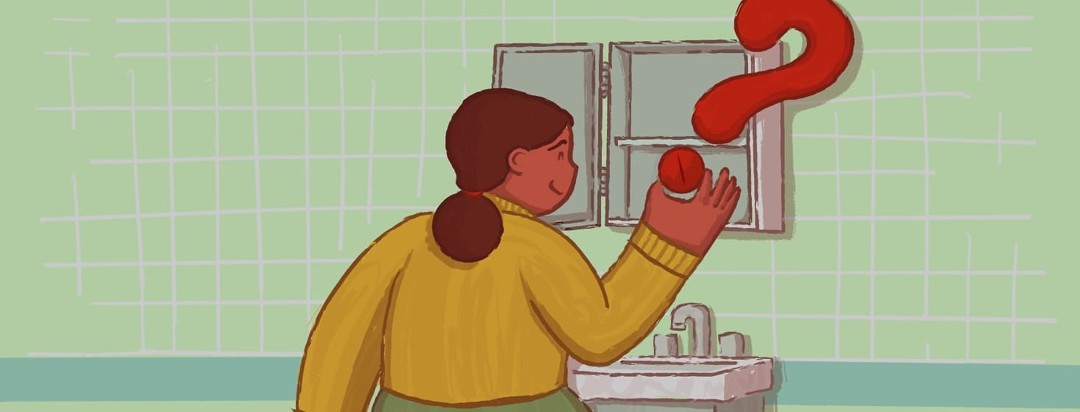What's in Your Toolbox? A Personalized Approach to Migraine
The complexity of migraine has always been fascinating to me. Even within the parameters of a single disease, there are many variations: it manifests with a variety of symptoms, and levels and frequency of pain, as well as different responses to both medications and alternate options.
In addition, we are all different in what gives us the courage and strength to face tomorrow. The importance of a personalized approach cannot be underestimated when it comes to treating chronic pain conditions such as migraine.
What is a personalized approach?
A personalized approach means:
- We no longer feel like we are part of a FAILING SYSTEM but rather that we are BEING HEARD.
- We are able to stop focusing on a system that tries to restrict us to an ill-fitting, one-size-fits-all box with no great answers and instead focus on HOPE.
- We have the opportunity to take back some CONTROL when so much has been lost.
Is there a treatment opportunity?
A personalized approach to a disease such as migraine often appears to be in conflict with the very nature of modern healthcare. As with most other things in life, that leaves us with a choice. Do we constantly mull over the inefficiency of a system that isn’t designed for us? Or - is it possible to see this as an opportunity to gather resources and put together our own personalized treatment plan?
What is a migraine toolbox?
Bearing in mind the shockingly low rate of patient satisfaction when it comes to the treatment of migraine, we actually have a potentially transformative opportunity to effect change for ourselves. And so the question is: What’s in YOUR toolbox?
Picture a toolbox in your mind. A simple container that has a wide variety of tools in it for multiple situations. Ideally, those tools are available for immediate and easy access. Maybe for some people, this is an obvious thing. However, it is easy to get completely caught up in doctors’ appointments, learning about new medications, and fighting insurance.
What might be in a toolbox?
It is very understandable when we set aside the things that we may be able to do to help ourselves. So, getting back to our toolbox for migraine that can include any or all of the following as well as a variety of other options:
- Preventive medications
- Abortive medications
- Vitamins and botanicals
- Pain management products and devices
- Meditation, mindfulness and biofeedback
- Cognitive behavioral therapy
- Acupuncture and massage
- Cannabinoids
- Comfort products
- Creativity options that distract or encourage
- Connection with others and support
Exploring options as a community
Over the next few months, I’m going to explore some of these topics through a series called, “What’s In Your Toolbox?” We’re going to look more in-depth at what people in the migraine community say helps them. We’re going to be exploring things together and helping each other figure out new options that may help.
Rather than focusing on the “Why XYZ doesn’t this help me?” we’re going to ask, “What else is there that might help me even a little?” Part of that is a matter of attitude. It’s a refusal to sit and wait as a bystander while leaving our doctors to try and figure things out. It’s a “take control” approach that may not make a lot of difference or, potentially, could make all the difference in the world to you.
At the very least, it’s an attitude that refuses to give up, and that is always proactively looking for something new. It’s an attitude that says, I am here, I am not okay with leaving things as they are, and I am going to be involved in figuring things out! By constantly refining our methods and being open to new research, we can continue making progress with migraine on our own terms.
How will we avoid treatment fatigue?
Bearing in mind that it can be a tenuous balance between hope and acceptance, there will be times when we just want to stop searching. There will even be times when we just want to give up altogether. However, by encouraging each other, sharing the things that help us, and letting each other know that we are not alone, we can do this! YOU can do this! After all, what’s the alternative?
Have we really tried everything?
I don’t know about you, but after decades of living with migraine, I have a pretty good idea about the things that are not going to help me. More so, I’m extremely aware of the things that can make me worse. However, there’s always something new to discover.
There are always new options emerging on the market, and I’m learning to be open to those things while still not expecting a miracle. Even if that tool in your toolbox consists of learning to do adult coloring, curling up on your couch with a soft blanket and inspirational socks, or discovering a game or puzzle that distracts from pain, that’s a positive thing. Maybe, just maybe, along the way, each of us might discover at least one thing that makes a difference to our lives.
What's in YOUR toolbox?
Let’s go on this journey together! We’re going to start by looking at vitamins and botanicals, followed by different devices and things we use at home. After that, we’re going to launch headlong into the wild west arena of cannabinoids and ways that we can use our minds, including meditation, biofeedback, and more. It’s going to be a fun journey! Hopefully, it will be a learning experience. I, for one, am really excited to hear from all of you about what helps, what doesn’t, and what you, too, are learning along the way.
So what’s in your toolbox? We’d love to hear from you!

Join the conversation